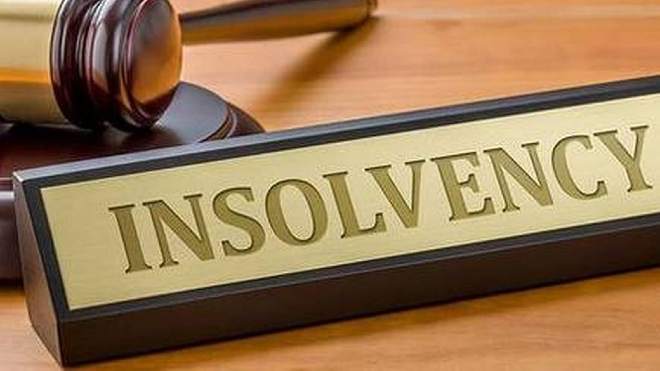Winding up of Company under Companies Act 2013
April 07, 2024 हिंदी में पढ़ेंTable of Contents
- What is the Winding up of a company?
- What is the law governing the procedure of Winding up in India?
- What is the procedure for Winding up a company?
- Liquidation of Company under the Insolvency and Bankruptcy Code, 2016
- 1. Removal / Strike off of the name of the Company-
- 2. Winding up under the Companies Act, 2013 by the Tribunal-
What is the Winding up of a company?
Winding up of a company is the process through which the life of a company comes to an end and its property is administered for the benefit of its members & creditors. An Administrator, called a liquidator is appointed and he takes control of the company, collects its assets, pays its debts, and finally distributes any surplus among the members in accordance with their rights.
What is the law governing the procedure of Winding up in India?
Winding-up proceedings are governed by the provisions of the Companies Act 2013 as well as the Insolvency and Bankruptcy Code 2016. Closure of the company under the aforesaid Act and Code can be done through the following modes:
1. Removal / Strike off of the name of the Company-
Section 248(2) of the Companies Act, 2013 read with Companies (Removal of Names of Companies from the Register of Companies) Rules, 2016 implies two different modes for removing the name of the Company from the Register of Companies- A. By the Registrar of Company (ROC) on a suo motu basis, if it has a reasonable cause to believe that-
-
A company has failed to commence its business within 1 year of its incorporation or
-
A company is not carrying on any business or operation for a period of 2 immediately preceding financial years and has not made any application within such period for obtaining the status of a dormant company under Section 455 (In such case, ROC shall send a notice to the company and all their directors of his intention to remove the name of the company and requesting them to send their representations along with relevant document within 30 days from the date of the notice) or
-
The subscribers to the memorandum have not paid the subscription amount which they had undertaken to pay at the time of incorporation of a company and a declaration to this effect has not been filed within 180 days of its incorporation or
-
The company is not carrying on any business or operations, as revealed after the physical verification of the registered office of the company.
B. By a Company upon filing of an application with the Registrar on all or any of the grounds mentioned above. If a company suo motu opts to remove its name as abovementioned, it can be done by taking the following steps-
-
A Company may after extinguishing all its liabilities, pass a special resolution or take consent of seventy-five percent. members in terms of paid-up share capital
-
File an application for removal of the name of the company in eForm STK-2 along with the fee of 5,000 rupees and the prescribed list of documents-
1. No Objection Certificate from a regulatory body constituted or established under that Act, in case of a company being regulated by a special Act 2. indemnity bond duly notarized by every director in Form STK 3 3. a statement of accounts containing assets and liabilities of the company made up to a day, not more than 30 days before the date of application, and certified by a Chartered Accountant 4. An affidavit in Form STK 4 by every director of the company 5. copy of the special resolution duly certified by each of the directors of the company or consent of seventy-five percent of the members of the company in terms of paid-up share capital as on the date of application 6. a statement regarding pending litigations, if any, involving the company. On receipt of such application, the registrar shall issue a public notice in Form STK-6 and shall place it on the MCA website, company's website, publish it in newspapers and also issue it in the Official Gazette for the information of the general public. The Registrar of Companies shall simultaneously intimate the concerned regulatory authorities regulating the company, viz, the income-tax authorities, central excise authorities, and service-tax authorities having jurisdiction over the company. Upon expiry of the time mentioned in the notice, if no objection is received, the Registrar may, unless cause to the contrary is shown by the company, strike off the name from the register of companies, and shall publish notice thereof in the Official Gazette, and on the publication in the Official Gazette of this notice, the company shall stand dissolved.
2. Winding up under the Companies Act, 2013 by the Tribunal-
Section 271 of the Companies Act, 2013 lays down circumstances in which Company may be wound up by the tribunal-
-
If the company has, by special resolution, resolved that the company be wound up by the Tribunal
-
If the company has acted against the interests of the sovereignty and integrity of India, the security of the State, friendly relations with foreign States, public order, decency, or morality
-
If on an application made by the Registrar or any other person authorized by the Central Government by notification under this Act, the Tribunal is of the opinion that the affairs of the company have been conducted in a fraudulent manner or the company was formed for a fraudulent and unlawful purpose or the persons concerned in the formation or management of its affairs have been guilty of fraud, misfeasance or misconduct in connection therewith and that it is proper that the company be wound up
-
If the company has made a default in filing with the Registrar its financial statements or annual returns for immediately preceding five consecutive financial years or
-
If the Tribunal is of the opinion that it is just and equitable that the company should be wound up
Section 272 of the Companies Act, 2013 clarifies the list of persons, who shall be entitled to file a petition for the winding-up of a company-
-
The company
-
Any contributory or contributories (holder of partly/fully paid up shares)
-
All or any of the persons specified in clauses (a) and (b)
-
The Registrar
-
Any person authorized by the Central Government on that behalf or
-
In a case falling under clause (b) of section 271, by the Central Government or a State Government.
What is the procedure for Winding up a company?
1. A Petition presented by the company shall be admitted only if accompanied by a statement of affairs, whereas if filed by any person other than the company, the Tribunal on being satisfied that a prima facie case for winding up of the company is made out, shall by an order direct the company to file its objections along with a statement of its affairs within 30 days of the order. 2. Within 90 days from the date of presentation of the petition, the tribunal may pass any of the following orders-
-
Dismiss it, with or without costs
-
Make any interim order as it thinks fit
-
Appoint a provisional liquidator of the company till the making of a winding-up order
-
Make an order for the winding-up of the company with or without costs
-
Any other order as it thinks fit.
3. The Tribunal at the time of the passing of the order of winding up, shall appoint an Official Liquidator or the Liquidator from amongst the Insolvency Professionals registered under the Insolvency and Bankruptcy Code, 2016 as the Provisional Liquidator or the Company Liquidator who shall entirely be responsible for the conduct of the proceedings for the winding up of the company.
Liquidation of Company under the Insolvency and Bankruptcy Code, 2016
A. Voluntary Liquidation of a company (Section 59 of the IBC, 2016)- 1. A corporate person who intends to liquidate itself voluntarily and has not committed any default may initiate voluntary liquidation proceedings under the provisions of IBC, 2016. 2. Voluntary Liquidation proceedings of a corporate person registered as a company, shall meet the following conditions- a. A declaration from the majority of the directors of the company verified by an affidavit stating that:
-
they have made a full inquiry into the affairs of the company and they have formed an opinion that either the company has no debt or that it will be able to pay its debts in full from the proceeds of assets to be sold in the voluntary liquidation and
-
the company is not being liquidated to defraud any person
b. A declaration under sub-clause (a) shall be accompanied by the following documents, namely:
-
audited financial statements and records of business operations of the company for the previous 2 years or for the period since its incorporation, whichever is later
-
a report of the valuation of the assets of the company, if any prepared by a registered valuer
c. Within four weeks of a declaration under sub-clause (a), there shall be:
-
a special resolution of the members in a general meeting requiring the company to be liquidated voluntarily and appointing an insolvency professional to act as the liquidator or
-
a resolution of the members in a general meeting requiring the company to be liquidated voluntarily as a result of the expiry of the period of its duration, if any, fixed by its articles or on the occurrence of any event in respect of which the articles provide that the company shall be dissolved, as the case may be and appointing an insolvency professional to act as the liquidator.
-
(In case of the company owing any debt to any person, creditors representing two-thirds in value of the debt of the company shall approve the resolution passed under sub-clause (c) within 7 days of such resolution.)
d. The company shall notify the Registrar of Companies and the Board (IBBI) about the resolution to liquidate the company within 7 days of such resolution or the subsequent approval by the creditors, as the case may be. e. Subject to the approval of the creditors (if required), the voluntary liquidation proceedings in respect of a company shall be deemed to have commenced from the date of passing of the resolution. 3. The provisions of sections 35 to 53 of Chapter III and Chapter VII shall apply to voluntary liquidation proceedings for corporate persons with such modifications as may be necessary. 4. Where the affairs of the corporate person have been completely wound up, and its assets completely liquidated, the liquidator shall make an application to the Adjudicating Authority for the dissolution of such corporate person. 5. On receipt of an application by the liquidator, the Adjudicating Authority shall pass an order that the corporate debtor is dissolved from the date of that order. 6. A copy of an order made by the Adjudicating Authority, shall within 14 days from the date of such order, be forwarded to the authority with which the corporate person is registered.
B. Liquidation process in case of company has made a default in payment of debts- 1. The provisions relating to insolvency and liquidation of corporate debtors shall be applicable only when the amount of the default is 1 Lakh rupees or more. However, the Central Government may, by notification, specify the minimum amount of default of higher value which shall not be more than 1 Crore rupees. 2. Where any corporate debtor commits a default, a creditor (financial or operational) or the corporate debtor itself may initiate Corporate Insolvency Resolution Process (CIRP) by filing an application before Adjudicating Authority. 3. A financial creditor either by itself or jointly with any financial creditors may file an application under section 7 of the Code, whereas an operational creditor shall first serve demand notice- demanding repayment of the operational debt as per section 8 and file an application under section 9 of the Code. 4. The Corporate Insolvency Resolution Process (CIRP) shall be completed within a period of 180 days from the date of admission of application. Further such period may be extended by a maximum of 90 days if a resolution has been passed at a meeting of the committee of creditors by a vote of seventy-five percent. of the total voting shares. 5. On admission of an application, the adjudicating authority shall by an order- (a). declare a moratorium (calm period) (b). cause a public announcement of the initiation of CIRP and call for submission of claims (c). appoint an Interim Resolution Professional (IRP). 6. The Interim Resolution Professional shall manage the entire affairs of the corporate debtor, exercise the power of Board/Partners, collect all claims received against the corporate debtor and constitute a Committee of Creditors. 7. The Committee of Creditors shall comprise all financial creditors, who on their first meeting shall appoint an Interim Resolution Professional as a Resolution Professional or replace it with another Resolution Professional. 8. The Resolution Professional shall submit a resolution plan, which if not submitted within the prescribed timeline or rejected by the Tribunal, then order for liquidation of the company can be passed in such manner and procedure as has been laid down in the Code and as may be necessary to give effect to the same.
These guides are not legal advice, nor a substitute for a lawyer
These articles are provided freely as general guides. While we do our best
to make sure these guides are helpful, we do not give any guarantee that
they are accurate or appropriate to your situation, or take any
responsibility for any loss their use might cause you. Do not rely on
information provided here without seeking experienced legal advice first. If
in doubt, please always consult a lawyer.
The internet is not a lawyer and neither are you.
Talk
to a real lawyer about your legal issue.

Comments by Users
A Arjunan
usefu
The Article explains in simple the various methods under which the company can be liquidated under the Companies Act 2013
Related Articles
Legal Questions Answered by Top Lawyers
Corporate Law Articles
User Reviews
what is meaning of NCLT and NCLAT?
What is the procedure to appoint a liquidator?
Nice aerticle. Please share about insolvency and bankruptcy procedure
Thanks for the information. Very detailed article on company law.
please share more about company law tribunal
how to contact a lawyer for my legal case?
good article. Very helpful
I want to know more about this law. Good work
The writer has explained the law perfectly.
Very helpful in understanding the law.
nice work. Learned a lot. Thanks
good article and easy to understand
Had a good time reading the article.
it’s a very good article
Nice piece on the subject.
very helpful
solved my queries.
great legal advice
nicely written
needed some more information on the subject.
needed a lawyer….what is the procedure?
nicely written. Great work
very good article. Can you tell me more about the law?
VIEW ALL


 621+ Lawyers are online
621+ Lawyers are online 











